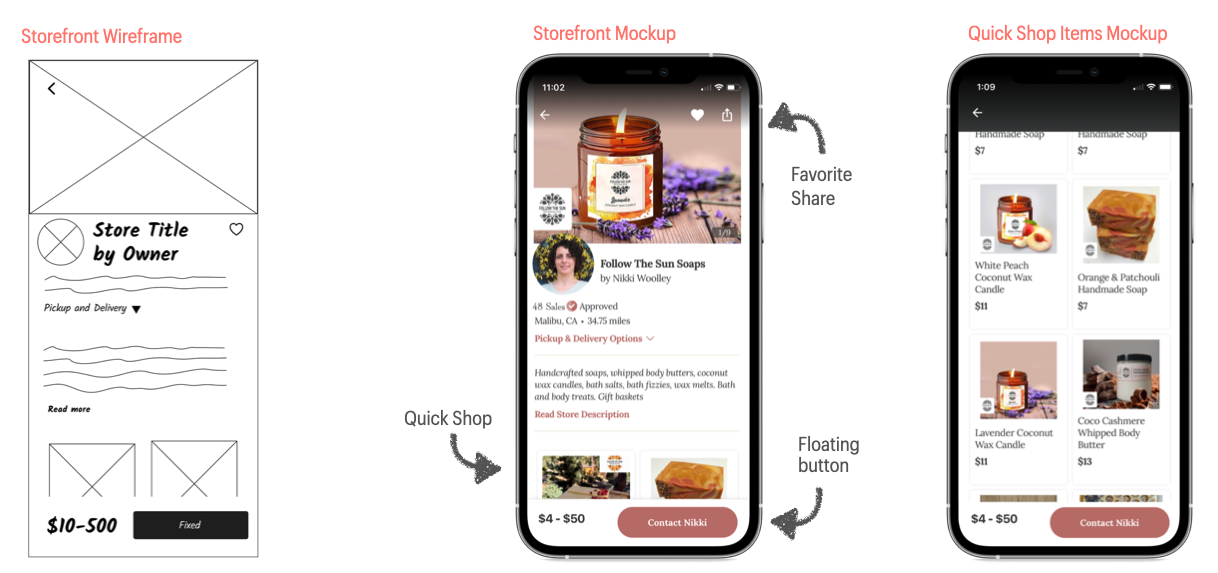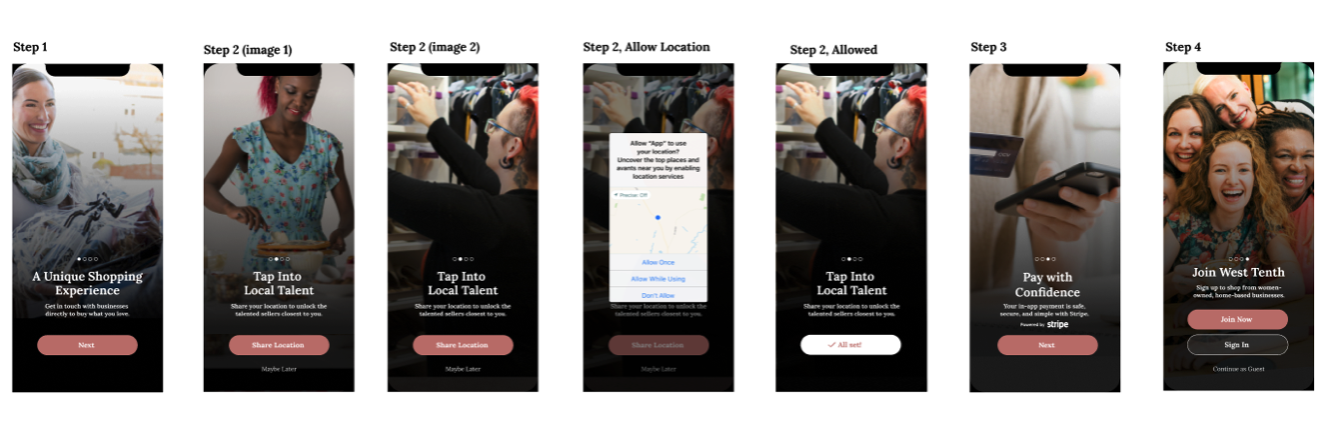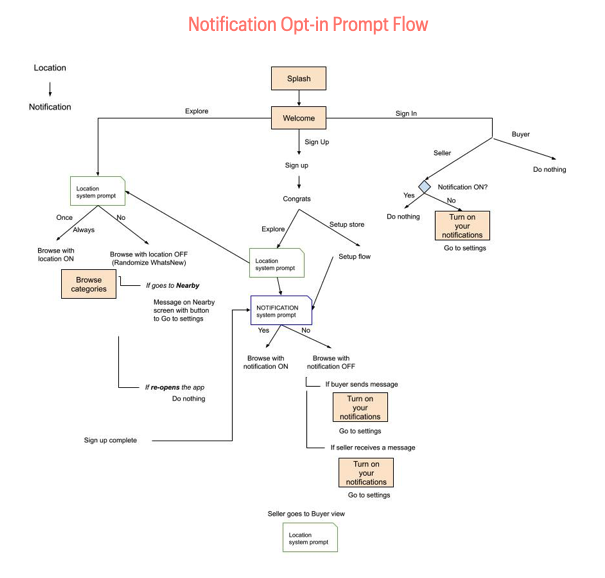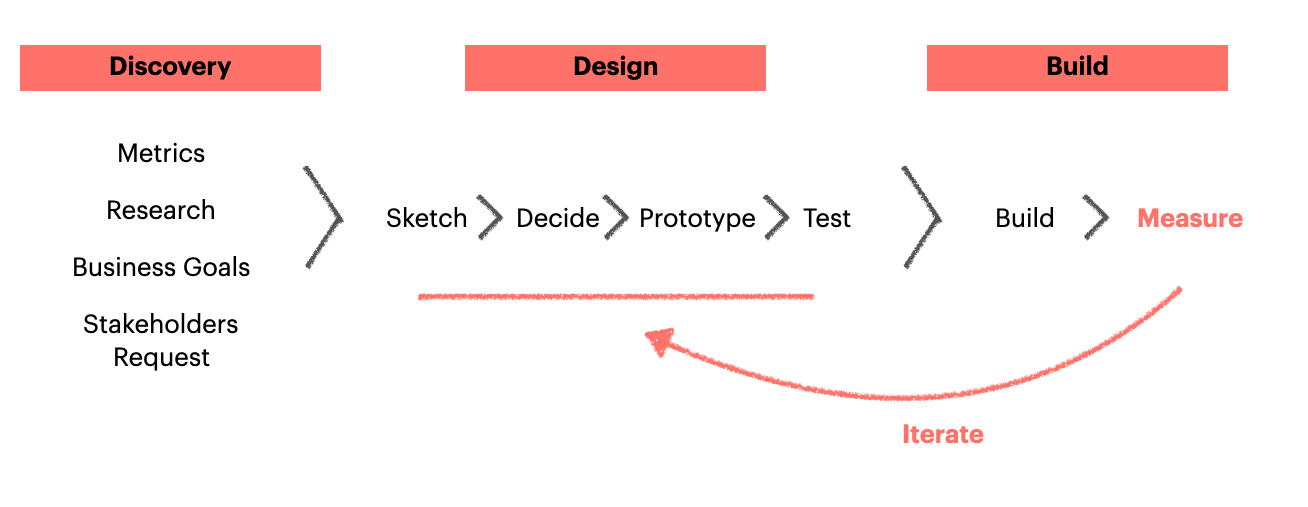Enhancing Retention & Revenue
for a Marketplace
West Tenth was a two-sided marketplace connecting women-owned, home-based businesses with busy moms. Its unique, conversation-based transactions enabled small solopreneurs to connect with local customers, fostering personalized service while eliminating delivery costs.
Role
Director of Product Management & UX Design
Timeframe
Various releases within a 8 months period, 2022
Tasks
UX research, design, strategy, and product management
Industry
Marketplace, eCommerce
Product Category
Consumer Products
Challenge
Low mobile app retention and revenue – Users loved the idea, but they were not returning to the app consistently, leading to lower engagement and sales.
Lack of a welcome experience for buyers – New buyers had limited visibility into the wide range of offerings, and little guidance on the conversation-based transaction process, leading to reduced early engagement.
Challenging seller onboarding flow – The process for sellers to set up their storefronts and list products was complex and unintuitive, leading to drop-offs and fewer active sellers.
Objectives
Increase Buyer Engagement by 20% – Enhance the user experience with habit-forming techniques, and improved search and browse of offerings to drive higher interaction and repeat usage.
Boost Sales – Optimize the conversation-based transaction flow, and introduce promotional features to encourage more conversions and repeat purchases.
Enhance Mobile App Experience for Sellers and Buyers – Improve navigation, refine the seller onboarding process, and provide better tools for showcasing products and services.
Research Summary: The research practice was initiated with 40 interviews with new and existing mobile app users, followed by a continuous user interview process with weekly generative and exploratory sessions.
Learnings: The app was easy to navigate, and the conversation-based shopping experience was well received. However, the buyer-seller flow was confusing, and storefronts lacked sufficient information.
Recommendations: Enhance storefronts with detailed services and product listings, streamline buyer and seller onboarding, and improve browse and search.
User Insights
Initiatives
To address the issues, several initiatives were implemented:
Continuous Customer Discovery: Gathered qualitative data through user interviews and conversations with customer support, marketing, and sales.
Competitive Analysis: Conducted a market overview of competitors.
Feature Improvements: Enhanced the storefront with Quick Shop, redesigned seller onboarding, categories, and search functionality.
New Features: Added notifications, homepage updates, buyer onboarding, promotional codes, favorites, and improved filters and sorting.
Buyer vs. Seller Views
The Seller home screen provided an easy way to switch to buyer mode, leveraging the natural network effect. It also highlighted The Foundry program and included marketing templates to help businesses thrive.
Storefront Redesign
The Storefront was redesigned to make shopping easier and more engaging. New features included Favorites to save items, Quick Shop for faster purchases, and a floating bar showing the price range and a “Contact Owner” button for easy communication with sellers.
New Buyers Onboarding
The new buyer onboarding flow improved brand awareness and activation by guiding users through the unique shopping experience. It helped users better understand how the platform works, focusing on personalized conversations and local talent. This approach not only made the shopping process clearer but also enhanced the overall experience, making it more engaging and relatable for users.
Notification System
The notifications feature was implemented with the primary goal of increasing user retention. Once a notification was received, it was stored in the dedicated Messages/Notifications section, providing a central place for users to access important updates. In addition to promotional messages, users received timely updates on their orders, payment confirmations, and even personalized thank-you notes. This approach aimed to keep users engaged by offering them valuable, relevant information that enhanced their overall experience and encouraged them to return to the platform.
Changing Location
One challenge was balancing local vs. distant orders. While the primary goal was to connect local shoppers and sellers, allowing users to select sellers from across town, could expand storefront options and drive higher conversion rates.
Design Process
The design process is tailored to each company, product stage, and available resources. The West Tenth Design Process was developed using industry standards to ensure alignment with both business goals and market needs.
Outcomes
Buyer retention rose 40% in 3 months driven by notifications, favorites, and browsing enhancements.
Buyer sign-ups doubled, and storefront visits grew 13% within 3 months, boosted by a new home screen, onboarding, and improved sort and filter features.
Store views converting to order requests doubled year-over-year due to Quick Shop and search optimizations.
Sales grew 130% compared to the previous year.
Lessons Learned
Velocity and iteration were key to building a feedback loop that met user needs and market demands.
User-centered design relied on both qualitative and quantitative data to guide informed design decisions.
Flexibility was crucial in adapting to evolving product needs and market conditions.
Cross-department alignment was essential for clear communication across teams and ensuring cohesive product development.








